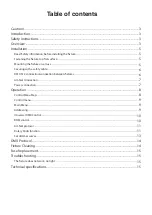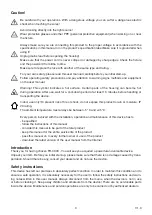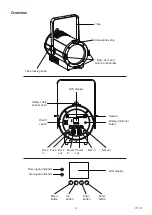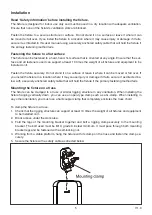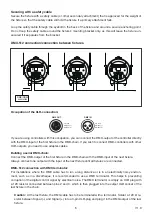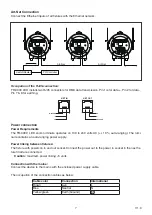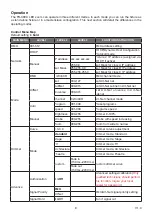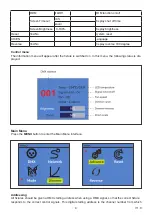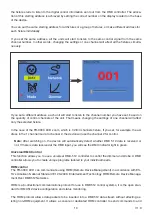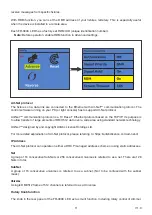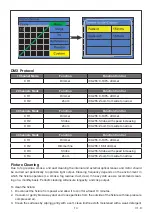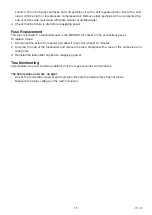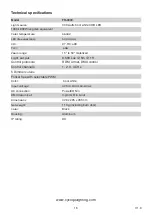
10
V1.0
the fixture starts to listen to the digital control information sent out from the DMX controller. The alloca
-
tion of this starting address is achieved by setting the correct number on the display located on the base
of the device.
You can set the same starting address for all fixtures or a group of fixtures, or make different address for
each fixture individually.
If you set the same address, all the units will start to listen to the same control signal from the same
channel number. In other words, changing the settings of one channel will affect all the fixtures simulta
-
neously.
If you set a different address, each unit will start to listen to the channel number you have set, based on
the quantity of control channels of the unit. That means changing the settings of one channel will affect
only the selected fixture.
In the case of the FR-300C LED zoom, which is 1/2/3/4 channels fixture. If you set, for example, the ad
-
dress in the 1 channel mode to channel 2, the device will use the channel 2 for control.
Note: After switching on, the device will automatically detect whether DMX 512 data is received or
not. If there is data received at the DMX input, you will see the DMX indicator light in green.
Universal DMX Control
This function allows you to use a universal DMX-512 controller to control the dimmer and strobe. A DMX
controller allows you to create unique programs tailored to your individual needs.
RDM control
The FR-300C LED can communicate using RDM (Remote Device Management) in accordance with ES
-
TA’s American National Standard E1.20-2006: Entertainment Technology RDM Remote Device Manage
-
ment Over DMX512 Networks.
RDM is a bi-directional communications protocol for use in DMX512 control systems, it is the open stan
-
dard for DMX512 device configuration and status monitoring.
The RDM protocol allows data packets to be inserted into a DMX512 data stream without affecting ex
-
isting non-RDM equipment. It allows a console or dedicated RDM controller to send commands to and


